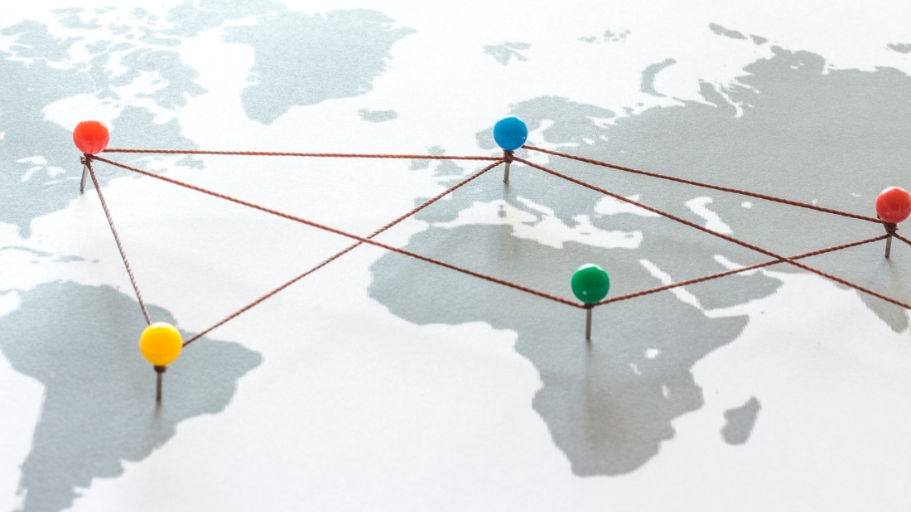Michael Freund Speaks on the Importance of Fostering Connections Across Continents

In an era marked by rapid globalization and digital communication, fostering connections across continents is increasingly crucial. Michael Freund, a distinguished figure in Jewish cultural preservation and global outreach, emphasizes the significance of creating and sustaining these international links. His work with Shavei Israel and his expertise in public affairs underscores the potential for interconnectedness to enrich cultural understanding and unity within the global Jewish community. The key facets of Freund’s approach to global Jewish outreach – the power of technology in education and communication, the transformative impact of youth exchanges, and the importance of cultural understanding – converge to envision a cohesive and vibrant global Jewish future.
To comprehend the intricate web of international Jewish connections, one must turn to experts like Michael Freund. As the Founder and Chairman of Shavei Israel, Freund has not only contributed to rekindling the Jewish spark in lost tribes and hidden communities but has also been instrumental in reconnecting them with Israel and the broader Jewish world.
Freund’s authority on the subject stems from his extensive background in fostering Jewish connections worldwide. His tenure as the Deputy Communications Director under Israeli Prime Minister Binyamin Netanyahu gave him valuable insights into the diplomatic and communicative efforts necessary for such endeavors. Through his organization, Shavei Israel, Freund has facilitated a global conversation on Jewish identity, providing a platform for diverse Jewish voices from every corner of the world.
Contents
ToggleThe Essence of Global Connectivity
The contemporary Jewish diaspora is a tapestry of communities, each with its unique characteristics yet bound by common threads of heritage and faith. Michael Freund elucidates the need for a cohesive global network that can nurture these ties, stating, “In our interconnected world, the Jewish people must forge stronger bonds across continents to ensure our collective future. It’s not merely about maintaining communication; it’s about reinforcing our identity and shared values on a global scale.”
A shared heritage and faith connect these dispersed communities, creating a singular people with a common lineage. In today’s rapidly shrinking world, the need for a robust and interconnected Jewish network is more prominent than ever. Such a network would not only preserve the unique qualities of each community but also strengthen the commonalities that unite them.
“Whether through technology, education, or cultural exchange, reinforcing our shared identity worldwide is essential,” Freund says, adding, “It is a commitment to ensuring that, despite the distances that separate us, our core values and cultural legacy remain intact, vibrant, and relevant for future generations. This task is not just about keeping in touch; it’s about cultivating a sense of unity and belonging that can withstand the test of time and space.”
Challenges and Opportunities in Global Jewish Outreach
Navigating the complexities of global Jewish outreach is akin to walking through a maze with countless paths, each presenting its challenges and opportunities. The question of how to preserve cultural integrity while welcoming the vast array of Jewish life’s expressions is a delicate one. Similarly, finding common ground among Jews from a spectrum of backgrounds demands a thoughtful approach.
In the labyrinth of global Jewish outreach, the challenges are as abundant as the opportunities. How does one maintain cultural integrity while embracing diverse expressions of Jewish life? How can Jews from vastly different backgrounds find common ground? Freund offers guidance: “We must approach these challenges with both sensitivity and creativity. Our outreach should emphasize finding innovative ways to unite us while remaining faithful to authentic Jewish values and tradition.”
These challenges require a combination of sensitivity to the nuances of various Jewish experiences and a creative spirit that seeks to bridge gaps. Outreach efforts, therefore, should not aim to homogenize but rather to highlight and embrace this diversity. By doing so, they can discover and cultivate innovative pathways that connect individuals and communities, weaving together the disparate strands of the Jewish diaspora into a more unified tapestry. Such efforts can become the cornerstone of a global Jewish identity that is as inclusive as it is distinctive.
The Role of Technology in Bridging Distances
As we venture further into the digital age, the Jewish community stands on the cusp of a connectivity revolution. Digital platforms have transformed the landscape of Jewish education and social interaction, allowing individuals from even the most remote locations to become active participants in a global network. The barriers of distance that once segmented Jewish communities are dissolving under the power of the internet, which facilitates instant communication across continents and time zones.
This technological advancement is indeed a pivotal moment for Jewish continuity. With access to a wealth of online resources, virtual synagogues, and learning opportunities, every individual can explore the depths of Jewish scholarship and community life from anywhere in the world. It’s a democratization of tradition and knowledge, making the rich spectrum of Jewish heritage accessible to all, regardless of geographic or social constraints.
The emergence of social media and other interactive platforms means that the conversation is no longer one-directional. Jews of diverse backgrounds can share their experiences, engage in dialogue, and contribute to a lively global discourse. Technology, in this sense, isn’t just a tool for connection; it’s a catalyst for a more engaged and vibrant Jewish life that transcends the physical borders that once limited our collective reach.
“Digital platforms have democratized Jewish learning and interaction, enabling Jews in remote locations to engage with the global community,” says Freund. “This is a game-changer for Jewish continuity, allowing us to reach across continents and time zones instantaneously.”
The Cultural Impact of International Jewish Youth Exchanges
Freund also highlights the impact of international youth exchanges in fostering global Jewish connections. He notes, “When young Jews from different countries meet, they learn not only about each other’s cultures but also about the diversity within their heritage. These exchanges are invaluable for building a sense of peoplehood among the next generation.”
The potency of international Jewish youth exchanges extends well beyond the immediate experiences of the participants. These programs catalyze cultural understanding and identity formation. When young people from various Jewish communities come together, they partake in a mutual exchange of stories, traditions, and perspectives that enrich their sense of self and community. They return home not just with memories but with a reinforced commitment to the global Jewish family and an enhanced understanding of what it means to be a part of this dynamic diaspora.
The bonds formed during these exchanges often lay the groundwork for lasting networks that continue to foster unity and collaboration into adulthood. They are a direct investment in the communal future, inspiring the leaders of tomorrow to maintain the dialogue and cooperation initiated during their youth. This ongoing interaction ensures that diverse Jewish communities remain interlinked, sharing in the collective responsibility of preserving their shared heritage while nurturing its evolution in a rapidly changing world.
Education as a Conduit for Cross-Cultural Understanding
Education remains a cornerstone of cross-cultural understanding and connectivity. “Through education, we can instill a sense of shared destiny and mutual responsibility in young Jews, no matter where they live,” says Michael Freund. Educational initiatives that span across borders can play a transformative role in shaping a cohesive global Jewish identity.
Initiatives that encourage learning across borders do not simply transmit knowledge; they imbue young minds with a sense of shared destiny and mutual responsibility. By engaging with educational programs that highlight the mosaic of Jewish life around the world, students gain a nuanced understanding of their own identity within the global context. These educational endeavors become a transformative force, shaping individuals who are well-versed in the traditions and challenges of disparate communities yet united in their core values and heritage.

Envisioning a United Jewish Future
Looking to the future, the vision for a global Jewish community is one of enhanced interconnection and unity. This forward-looking perspective is accompanied by a compelling call to action, emphasizing the importance of rooting the Jewish future in the rich soil of tradition while also remaining alert to the possibilities that the present and future hold. Strengthening the ties across continents is more than a goal; it is a foundational endeavor that promises to yield a Jewish populace that is at once united by shared history and invigorated by the diverse expressions of its members. This approach is about constructing a resilient and dynamic identity that can navigate the complexities of the modern world while preserving the essence of its heritage.
Freund envisions a global Jewish community that is more interconnected than ever before. He concludes with a call to action: “The task before us is to envision a Jewish future that is rooted in our traditions but also vibrantly alive to the possibilities of the present and future. By fostering connections across continents, we are laying the groundwork for a Jewish people that is united, resilient, and dynamic.”
Recommended For You
Top Things to Know Before you Play the Lottery Online
Most Inside
Most Inside offers high-quality recommendations and valuable updates to enhance all aspects of your life, providing premium guidance and enriching experiences.





